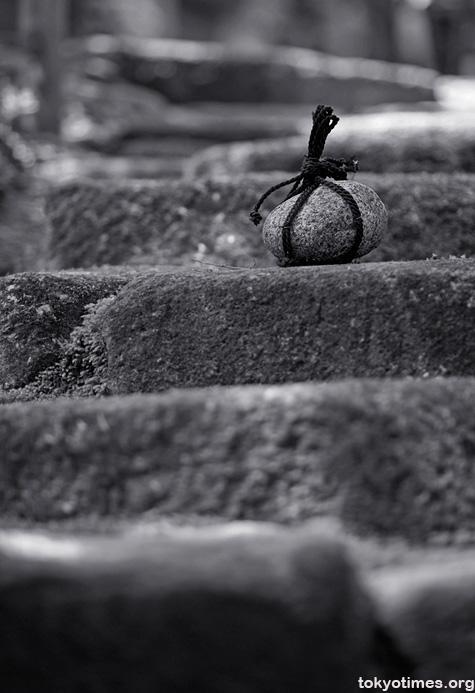For me at least, the more moss and stone a garden contains, the more fascinating it becomes, and even better if it boasts a tome ishi (æ¢çŸ³) or two; a stone with rope wrapped round it that, whilst perfectly fitting its surroundings, is also functional, meaning ‘stop’ or ‘no entry’.

The only trouble is that as it’s not a universally known symbol — and even when taking the picture above several passing couples voiced aloud their wonder about what it was — such stones are often saddled with a sign, detracting somewhat from their simpleness.

Thomas Gantz says
It is great in its simplicity
Brett says
This is wonderfully simple, although for plain unambiguity I still prefer landmines.
MrSatyre says
Thanks for this valuable tip, Lee! If I ever get back to Japan, I’ll have to keep an eye for these so I don’t inadvertently intrude. I always do my best to follow local customs, but sometimes even my Japanese friends profess to cluelessness. 😉
Lee says
You are welcome! Yes, it’s nice to know that it’s not just the bungling gaijin who is prone to such blunders. As well as those passing not knowing what it meant, the missus also admitted she was unaware of it’s meaning.
Linette says
It’s beautiful. Much more elegant than a ‘no trespassing’ sign. I wish it could work for door-to-door salesman too.
Lee says
That would be very nice indeed, but probably even the land mines Brett mentioned wouldn’t stop them…
Yasukostyle says
This is beautiful! It’s a beautiful example of saying something without speaking or if the others are on the same plane, your feelings are understood without using words. Very Zen. Thank you.
Lee says
Thanks, it’s nice to know that it’s not just me who has a penchant for stones with rope wrapped round them!
Igoru says
Simple and beautiful, very Zen indeed. Thank you, I learn something marvelous about Japan every day .